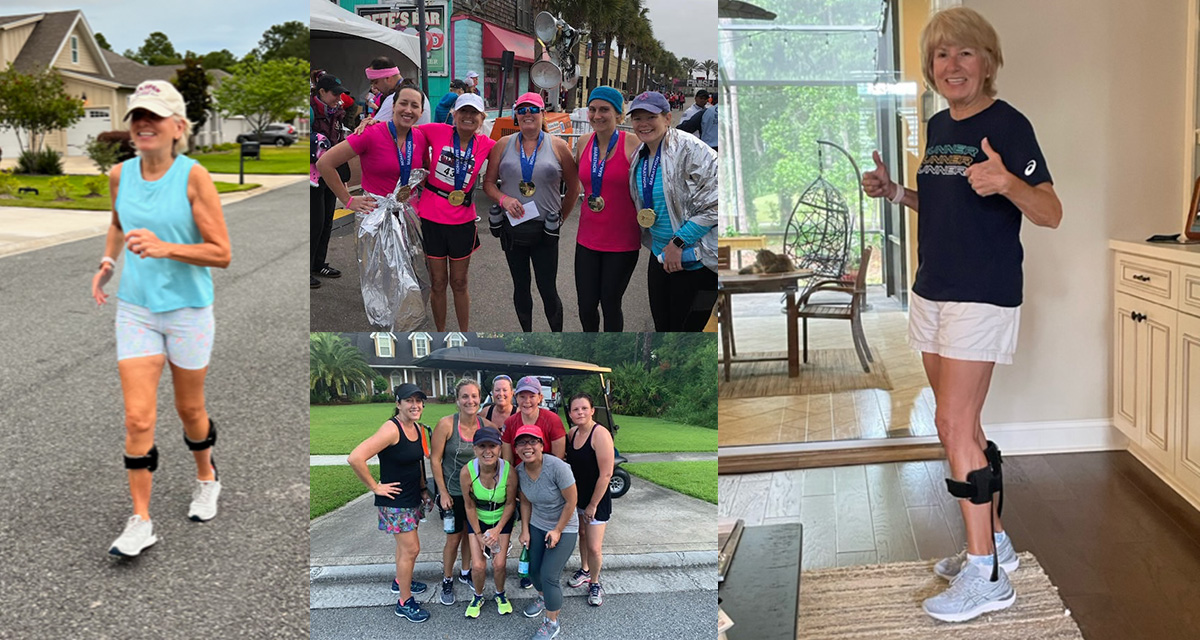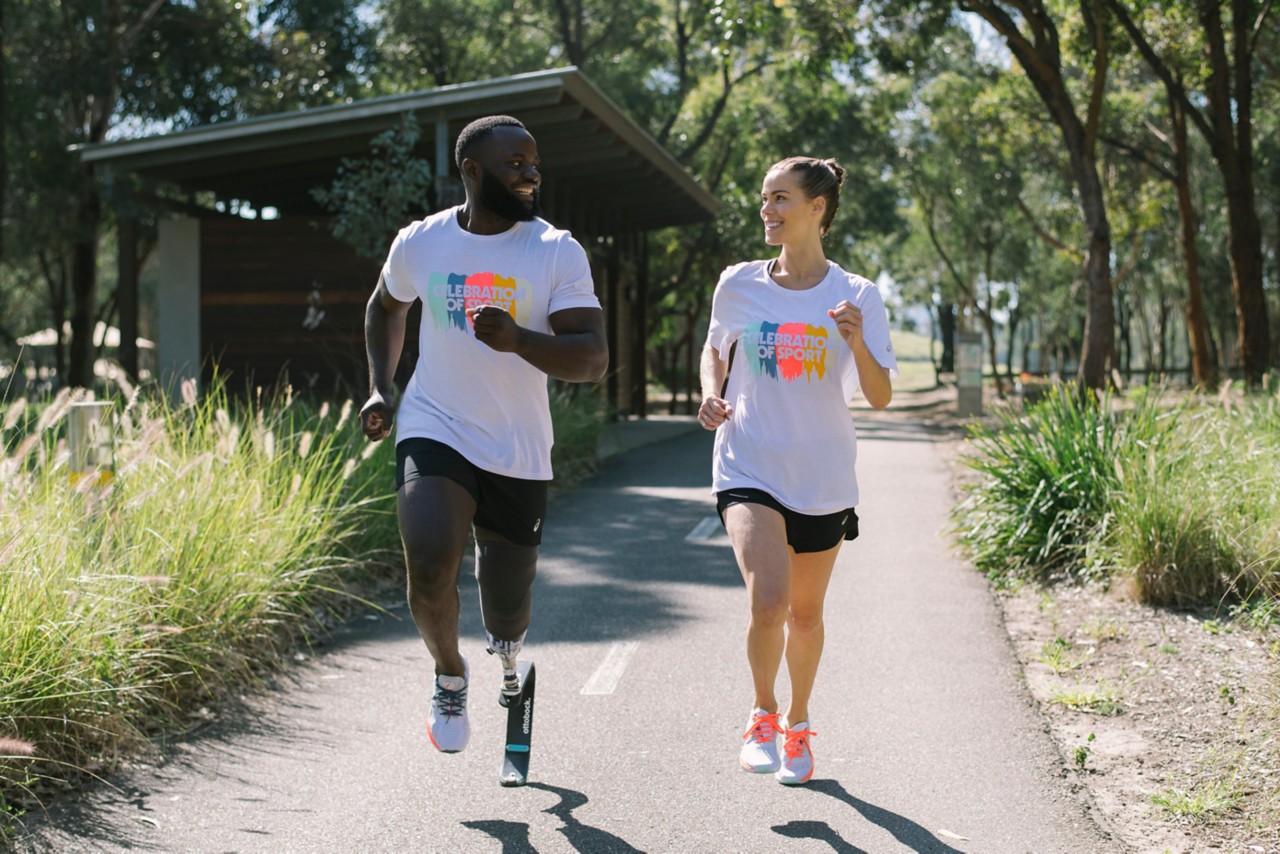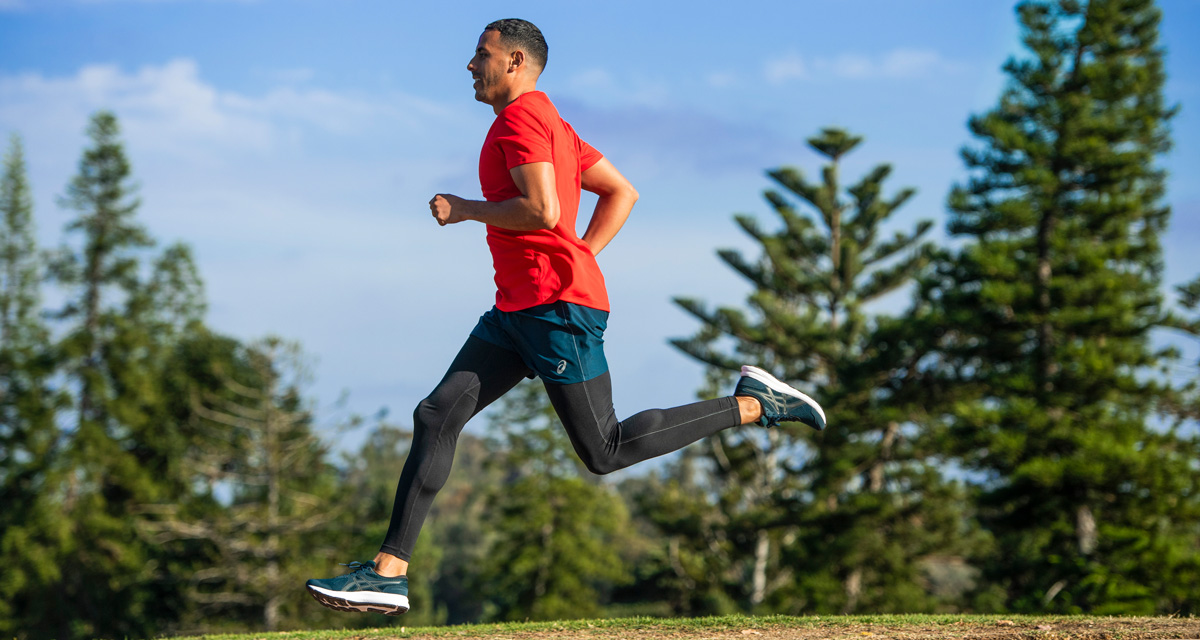Mickey is a runner. At 68 years old, 5’1”, and with a slight build, other younger, taller runners often tower over her. They frequently zoom past her as she keeps her slower pace while alternating between running and walking. Other runners don’t know she suffers from Parkinson’s Disease and osteoporosis. They may see her leg braces and think, “What is she doing out here? She can’t possibly be a runner.”
They don’t know the grit and passion that dwells within this woman. They don’t know that Mickey is not only a runner, she is a marathoner.
At the age of 55, shortly after she retired, Mickey ran her first marathon. She thought, “I’m not going to be one of those people who get old and crotchety. I’m going to start training for a marathon.”
That first marathon was just the beginning. “Ran that one and swore as I crossed the finish line I would never do it again. About a month later, I thought, ‘Son of a gun! Ya know what? I think I want to do it again,’”. In tribute to her late mother, she signed up for another marathon taking place on her mother’s birthday. Since then, Mickey has completed six marathons.
Getting started with running
Her start to running was unconventional. At 30 years old, she became very sick while vacationing in Saint Martin. On her long road to recovery she told herself, “If I ever get better, I’m going to start taking care of myself.” Upon recovery, she started running and hasn’t stopped since. She credits her family with the inspiration to run. “We are slower than molasses but we’re out there every day moving. And I’m still sticking with it through thick or thin and through broken legs, broken toes, broken everything.”
Everything? Yes, everything. “You name the bone and I’ve broken it!” says Mickey.
At age 35 she was diagnosed with senile osteoporosis. She’s broken 26 bones in her body, with many breaks occurring while running. One of the worst injuries she sustained was three fractures in her foot while training for a marathon.
Due to Parkinson’s disease, every walk or run Mickey completes is done with leg braces. Sometimes people look at Mickey and say, “This is ridiculous or unrealistic,” but she’s not letting the degenerative disease (or other people) stop her from doing something she loves.
Mickey found that for her, rigorous exercise is helpful to combat the symptoms. “Running lessens the effects of Parkinson’s for me. With Parkinson’s your brain is losing dopamine and running increases dopamine for me. If I sit around, then I’m a mess.”
Running with Parkinson’s and osteoporosis isn’t easy. When she wants to quit, she remembers her dad. “My dad had Parkinson’s too. He also had juvenile rheumatoid arthritis. And he was still going strong at the age of 80 years old. My dad was such a role model. Someone always has it worse than you. You just suck it up and keep running,” she says.
Running as a way of life
Mickey has logged over 4,400 miles since she downloaded the ASICS Runkeeper app in 2012. She’s an avid user who is passionate about sharing the life-changing benefits of running with others. “You can have the crappiest day in the world and you’ll just say, I just got to go out for a run. And you’ll come back and you’ll be a completely different person. It’s so good for your emotional wellbeing. If you aren’t a runner, and you don’t try it, you’re never going to understand that feeling. You’ve got to try it,” she says.
Mickey has plenty of opportunities to share her passion for running with others. On top of being a runner herself, she is also a marathon coach.
Year after year she has guided runners in training for the DONNA Marathon in Jacksonville, FL, near the military base where she lives. Often her trainees are completely new to running. In 2022, she started with eight women, none of whom had ever run more than a mile. By the end of the training, there were only three. This doesn’t discourage her though; she believes three runners are better than no runners.
“I tell them, ‘You don’t have to be good. To me, running isn’t physical, it’s mental. You get this little guy on your shoulder that says, ‘no you can’t do it. You got to fight that guy off and listen to the guy on your other shoulder who says, ‘yes you can’,”.
“I’m a goal setter. If I say I’m going to do something, then I’m going to do it and I love challenges. When the women I recruit say they’re going to run the marathon, it gives me something to focus on.”
Yearly from August through February, Mickey guides her running recruits using the Custom Workout feature in the Runkeeper app. She prefers the Galloway method of alternating a 30-second run with a 30-second walk. Come race day, she and her running recruits use this method to tackle the entire marathon. She sets up the 30-second intervals in the Runkeeper app and can see the cues to either walk or run on her smartwatch.
Mickey loves seeing the physical and mental changes in her runners. “One of the feelings of accomplishment that I loved this year was one of the women who had never run before said, ‘We’re doing a short run this weekend? We’re only running 9 miles?’ I said ‘See, I told you!’”
Race day
Mickey knows how to make race day special for her runners. In previous years she has rented a limo to take the racers to the start line. “With all the jitters and anticipation, I want to go down as a team,” she said. She sends everyone a pre-race checklist a few days before the race to make sure everyone knows how to prepare for the race correctly. “Lay out your clothing the night before. No alcohol three days before the race. Use deodorant to reduce chafing. Don’t wear socks with seams or new clothes on race day,” she said. As they are driving down, she passes out Sport Beans to everyone to keep everyone’s energy up.
And how does she combat race day jitters? “We’re just going to have fun. Think of race day as any other training day. Go out and enjoy yourself,” she encourages.
And what does this six-time marathoner say is the secret to a great race?
“Pop Tarts! They are easy to eat, you don’t have to cook them, and it gives you a burst of energy. Oh, they’re great. Try the brown sugar and cinnamon one.”
The stories
Mickey has her fair share of marathon stories. One year she was training a nurse anesthetist, who kept saying she only wanted to train for the half marathon. “Every week I’d say, c’mon, you can run the full marathon.” Finally, Mickey wore her down and she agreed to run the full with the rest of the training team.
Come marathon day, at mile 11, Mickey heard ambulances ahead of her. Soon after, she got a text from her trainee that read: “Oh, crap. I just saved someone.” At mile 14, a woman had collapsed with no pulse. Mickey’s trainee began performing CPR. When the paramedics arrived, they couldn’t find a vein in the collapsed woman. She exclaimed “Give me the needle! I’ll do it!.” One shot with the needle and the woman came back to life. Mickey reflected, “Now, if my trainee hadn’t decided to run the full marathon, if I hadn’t pushed her every week, that woman would have died because it happened at mile 14. It’s something I’m proud of. Everything happens for a reason,” Mickey says. Her advice? “Always run the full marathon.”
Though she never had kids, she often feels like she is a parental figure to the runners she trains. “I feel like a proud mama when they cross the finish line. Then they post online, ‘I can’t believe I did it! If it wasn’t for Mickey pushing me…’ Selfishly I do it because I like helping people.”
“They sign up because they want the bling (race medals) around their necks. I’m doing this for me but also to entice people to get up, off of their butts, and start running.”
Advice to new runners
For those new to running, it can be daunting to think about running a mile, let alone a marathon. “Don’t be afraid. You have to start like a baby. From day one, you just put one foot in front of the next. You go slow and you pace yourself,” she says.
Against all odds, Mickey will keep running and continue to train others. She added, “I’m going to do everything humanly possible, and then some, to keep running.”
No matter the challenge, we hope you keep running. Read more Runkeeper user stories.
Please note: This blog is not intended to be a substitute for professional medical advice, diagnosis, or treatment. Always seek the advice of your physician or another qualified health provider with any questions you may have regarding a medical condition.




